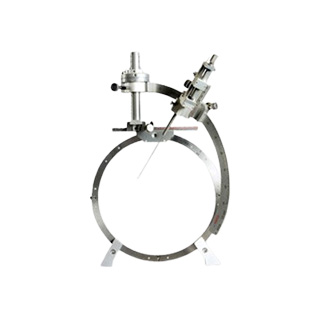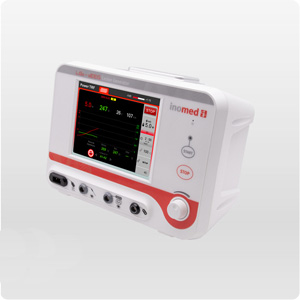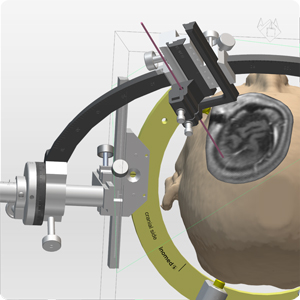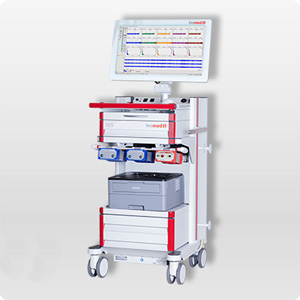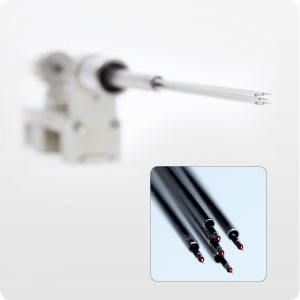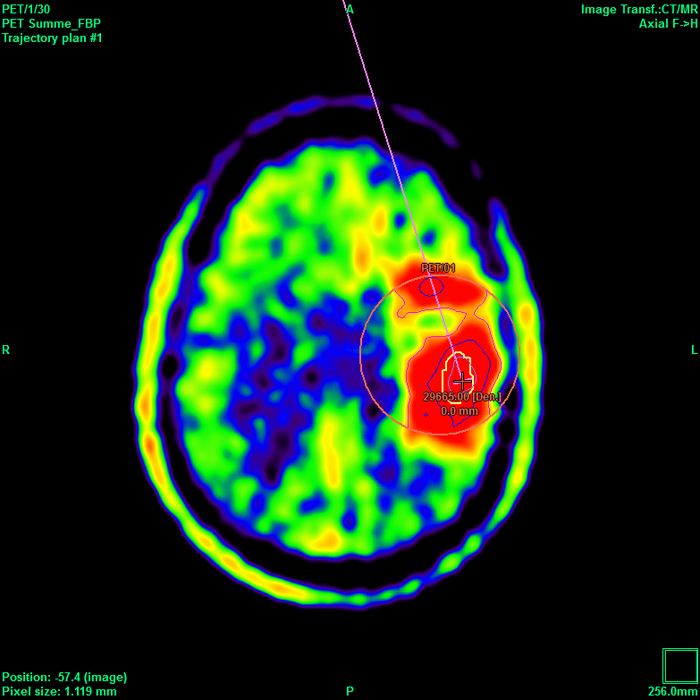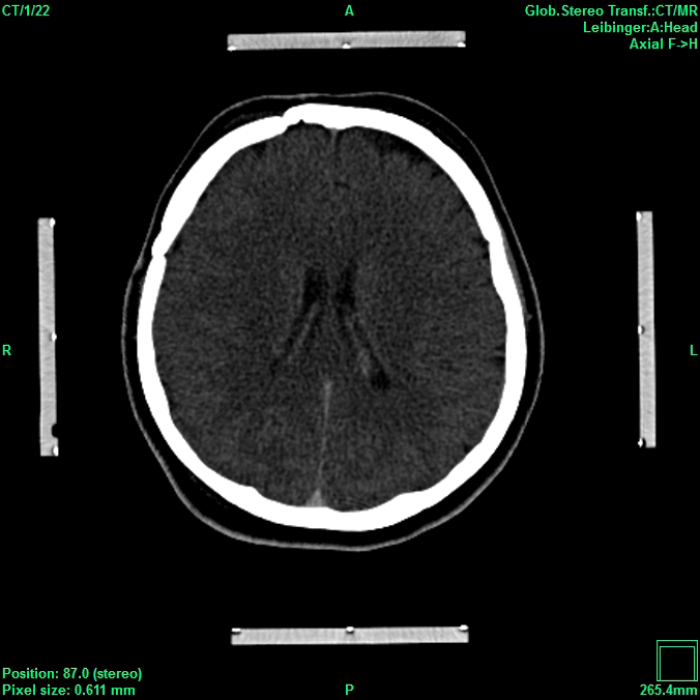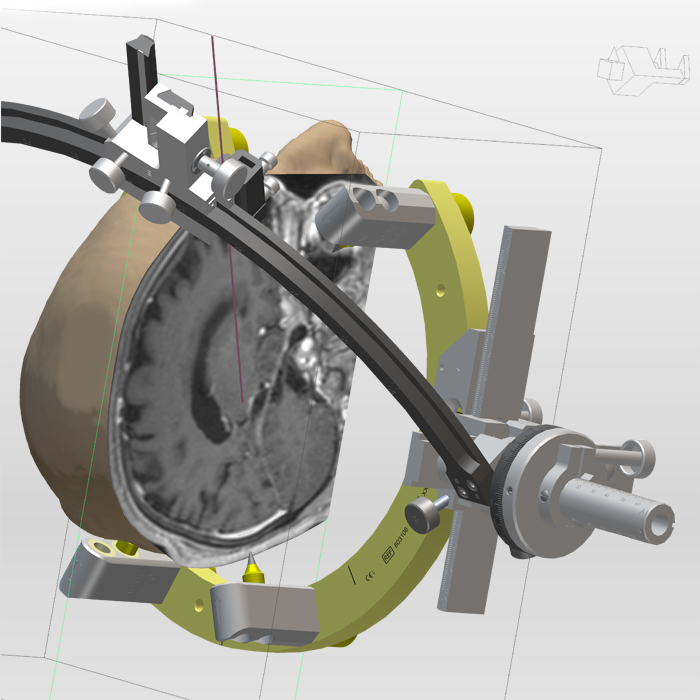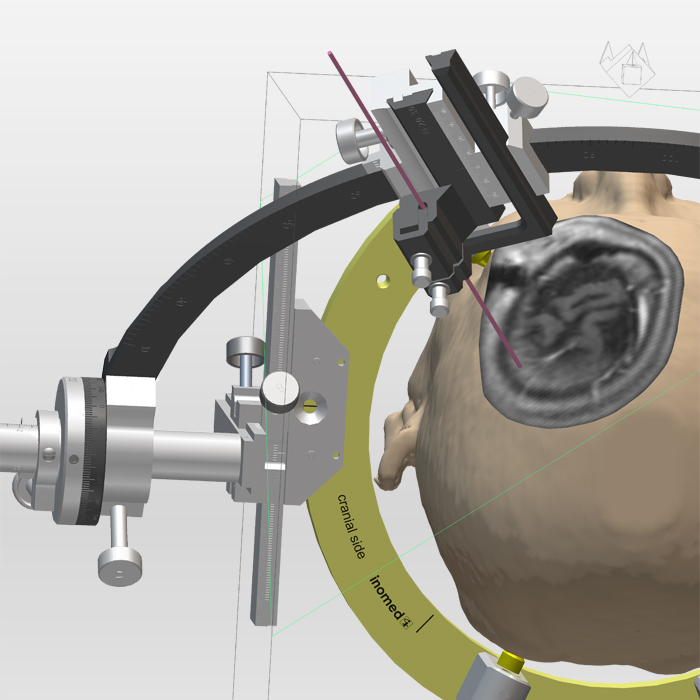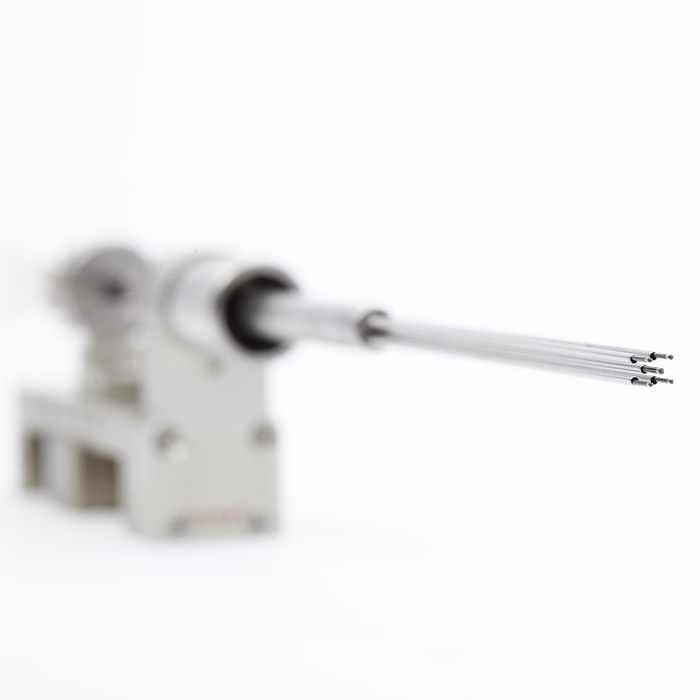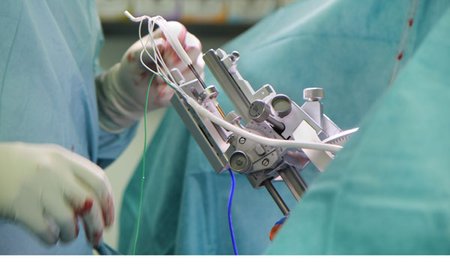EMIG GmbH - Official distributor of medical equipment in the following regions of Europe and beyond:
- Meyer & Haake – Ukraine, Austria, Germany (Bavaria); RiwoSpine – Ukraine, Moldova, Estonia;
- Inomed – Ukraine, Moldova, Estonia; Fluoptics – Ukraine.
Functional neurosurgery and stereotaxis
-
LG2-sEEG Lesion Generator
LG2-sEEG for RF thermocoagulation of patients with drug-resistant epilepsy sEEG
-
iPS
High quality with fine resolution define the iPS planning software from inomed. Areas of application include stereotactic interventions, such as DBS.
-
Stereotactic Systems
inomed delivers highly accurate, precise stereotactic products
-
ISIS MER System
inomed uses the world's smallest multi-channel neurostimulator in its MER system. Use the additional modular micro module to record and analyze the complex local field potentials.
-
MicroDrive
Experience inomed's precision masterpiece for targeting "deep brain stimulation" – the inomed MicroDrive
Stereotactic and functional intervention in the field of neurosurgery
Functional and stereotactic neurosurgery is developing minimally invasive surgical procedures that make very complex treatments and interventions on the human brain possible. The implantation of a brain pacemaker, often the last chance of reducing the symptoms for people suffering from Parkinson's disease in an advanced stage, would be unthinkable without stereotactic devices and applications.
We at inomed are proud to be among the pioneers in this discipline. Our stereotactic systems in the field of neurosurgery are among the world's most widely used precision tools. Our systems date back to the early days of stereotactics and are used on all five continents. Through a consistent and continuous strategy of innovation that always focuses on collaboration with leading clinicians in the field of neurosurgery, we now have a unique product portfolio in functional and stereotactic neurosurgery. As a part of this drive to innovate, inomed has developed the world's smallest multi-channel neurostimulator, setting new standards in the market.
Minimally invasive - maximum success
One of the goals of functional and stereotactic neurosurgery is to leave minimal traces of intervention. Products from inomed play a major role in this process. Our products are used in minimally invasive procedures in the human brain to prevent any unwanted trauma or side effects for patients. From diagnosis to stereotactic planning, from intervention to helping deliver better outcomes – leadership in functional neurosurgery has an established and trusted name: inomed
Interventions with the highest precision in neurosurgery
A thorough diagnosis is the top priority for functional neurosurgery and forms the basis for all additional therapies. Cranial interventions can be calculated precisely thanks to inomed’s state-of-the-art imaging procedures and transferred to a stereotactic device. Additional histopathological diagnoses allow for stereotactic tumor biopsy, the micro-electrode is used to derive neurophysiological target diagnostics, and RF thermolesion makes it possible to inhibit target points precisely.
We offer a complete system for microrecording during stereotactic interventions. Starting with the planning software and stereotactic systems, through to the MicroDrive and lesion generator, as well as the precision electrodes to stimulate, record and lesion – the entire up-to-date technical portfolio for functional neurosurgery.
sEEG Thermocoagulation for Patients with Drug-Resistant Epilepsy

The New LG2-sEEG: Intuitive Lesion Generator especially for sEEG Treatment
The LG2-sEEG Lesion Generator is one of the new devices in the inomed RF Lesion Generator series. In combination with the sEEG-Box, it is possible to perform RF treatments via sEEG electrodes. sEEG (stereoelectroencephalography) is an invasive, diagnostic procedure for patients with drug-resistant epilepsies.
Highest safety, precision and comfort in sEEG and Brain Lesioning
The versatile RF Generator can be used in many different modes and with various instruments: brain lesioning in temperature- and power-controlled mode as well as for the most common pain applications. Mono- or bipolar pain and brain electrodes can be connected on the front socket. One sEEG electrode with up to 18 contacts can be connected to one socket of the sEEG Box. The second sEEG socket can be used for research applications.
The device features a real-time display of power output and impedance during sEEG lesioning. Audio impedance during brain lesioning provides real-time audio feedback of impedance changes.
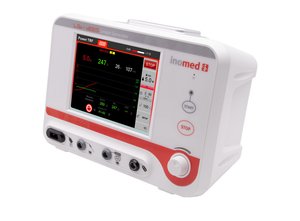
LG2-sEEG RF Lesion Generator
- Stimulation: motor and sensory stimulation menu
- Continuous radiofrequency: power-, temperature-controlled or step mode
- Pulsed radiofrequency: temperature-, voltage-, pulse width-controlled
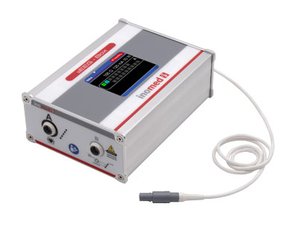
sEEG-Box for LG2-sEEG
- 1 channel for sEEG electrodes with up to 18 contacts
- 1 channel for research mode
- Connection cables for sEEG electrodes from manufacturers DIXI and Alcis
- sEEG simulator plug for test purposes
Main application areas LG2-sEEG:
- sEEG thermocoagulation treatment
- Stereotactic brain lesioning
- Trigeminal neuralgia
- Further pain treatment procedures
Target point planning, biopsy and DBS
inomed planning software - iPS
Accurate and precise planning is essential for all forms of neurosurgery that require targeting structures in the brain. For example, targeting the STN for DBS procedures requires that the target is identified and a precise and accurate trajectory is defined for use with stereotactic devices. In order to achieve this, it is essential that a high-precision and easy-to-use planning tool is employed. The inomed iPS software is such a tool, enabling the clinician to easily assemble all of the necessary imaging modalities and create an optimum set of planning coordinates to target the area of interest.
State-of-the-art imaging techniques in combination with developments in the field of IT have led to breakthroughs in stereotactic and functional neurosurgery. These technologies have enabled accurate and tissue-sparing interventions in the human brain. All the planning tasks are carried out by the inomed iPS planning system.
Safe intervention during DBS requires precise planning
Before any surgical intervention, surgeons use the iPS from inomed to plan their access and target point coordinates for specific surgical interventions in the brain. The target defined may be verified prior to surgery using the inomed target point simulator.
What sets the IPS planning software apart is the high quality of its image manipulation tools and the methods and algorithms used to merge images together. If required, anatomical atlases can be projected onto the patient's own data. In turn, this allows verification based on anatomical principles and provides for safe intervention.
Seamless connection to IT systems
Interfacing with hospital imaging tools is a prerequisite for successful and effective operation in planning and stereotactic interventions. The inomed iPS software connects seamlessly to hospital-specific imaging equipment and IT structures. In addition, the iPS software supports a variety of different image formats, allowing for a wide range of applications. Once planning is complete, the resulting data is transferred to the stereotactic system, paving the way for an accurate and safe surgical intervention.
There is currently no other stereotactic planning software besides iPS that supports the wide range of different stereotactic systems on the market. Whether carried as a laptop or in stationary mode with a network connection, iPS provides reliable coordinates and helps ensure successful interventions.
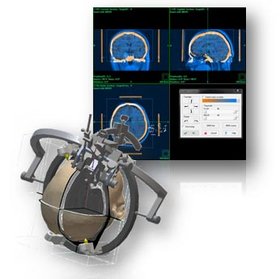
Supporting all planning approaches
iPS supports all planning approaches, whether free-hand, functional, atlas-based or metabolically-oriented. In each case, various options are available that can complement each other to provide greater safety in interventions, such as DBS.
A powerful multi-level fusion algorithm allows the merging of digital and digitized image information, always preserving the exact patient geometry in the foreground, with simultaneous optimization of anatomical visibility and image quality. This forms the basis for a secure, high-risk intervention, such as DBS.
Additionally, post-operative imaging can, after an intervention such as DBS, be combined with pre-operative information so that complications can be excluded and the accuracy of the procedure verified.
Features
- PACS connectivity
- DICOM import and export
- Automatic image fusion
- 3D simulation
- Visualization of electrodes
- Anatomical atlases
- Supports all imaging systems
- Post-operative checks
Applications
- Stereotactic target planning
- Biopsy planning
- Deep Brain Stimulation (DBS)
- SEEG planning
Stereotactic systems from inomed
inomed continues the tradition of uncompromising precision in stereotactic tools
Modern functional neurosurgery procedures are now so minimally invasive that they have to be planned and performed with the highest degree of precision. The inomed stereotactic systems are defined by their reliability, precision and stability in their overall function. The fact that the work of the surgeon and the OR team is so simplified - because inomed’s systems are so easy to operate - is one of the qualities of inomed’s stereotactic systems that our customers appreciate most.
To date, there are no other systems on the market that are more convenient or have higher precision than the stereotactic systems created by inomed. The following reasons will help to explain why.
High stability for stereotactic interventions
The ring-based stereotactic system used by inomed provides the highest level of stability. The basic physical properties of a ring are superior to all other basic geometric shapes in terms of strength and tolerance. This basic design element of the system and structure avoids common sources of error.
inomed stereotactic systems are the only systems worldwide with an advanced target point simulator. With the inomed target point simulator, theoretical planning from the planning software tools can be measured and verified according to the real-world geometric environment. There is no better way to ensure maximum patient safety combined with optimum precision. In addition, the use of inomed target point simulator results is a second and clear practical advantage. This means that when using the planning software, stereotactic frame and MicroDrive system, it is easy to check that the instruments used are functioning properly and within tolerances prior to surgical intervention. No other system on the market is more capable of providing this level of safety and design. inomed stereotactic systems set the absolute benchmark in terms of accuracy.
Choose the right system for optimal patient treatment
inomed offers a choice of stereotactic systems to suit customer-specific requirements our customers are able to choose between the Riechert-Mundinger system (RM) and the Zamorano-Dujovny (ZD) system. Both systems were developed by fellow neurosurgeons. Both systems are also an indelible part of the history of stereotactic neurosurgery. This is a further reason why inomed enjoys an international reputation for providing the highest precision and is respected for continuing the tradition of the application-driven and patient-oriented development of stereotactic devices.
Verification of the stereotactic planning coordinates is performed by the inomed target point simulator, also known as a phantom. All the systems combine methods of traditional stereotactics with the modern requirements of stereotactically-guided microsurgery, deep brain stimulation, thalamotomy/pallidotomy, and stereotactic biopsies.
Using inomed products for stereotaxic surgery means you will be benefiting from the reliability of a system where the functioning of all individual components is perfectly coordinated into one complete system.
- SUSy – Stereotactic Ultralight System
- RM-System
- ZD-System
- Target point simulator
The inomed ISIS Microelectrode Recording (MER) system
inomed ISIS MER - The most compact and intuitive MER system available
Deep brain recording and stimulation or extracellular recording in other regions of the brain is potentially a high-risk intervention requiring a precise and systematic approach. The ISIS MER system is a self-contained, microelectrode recording system that provides all of the hardware and software elements necessary for targeted measurement in MER and neuromodulation techniques. The ISIS MER system can be configured for a wide range of applications and is designed to be easy and intuitive to use.
ISIS MER System: Modularity in neurosurgery
The portable ISIS MER system comprises all the equipment the neurosurgeon will need in one box: ISIS MER USB Headbox module for microelectrode recording and ISIS EMG USB Headbox module for electromyography. The system includes a high specification Notebook computer and medical grade power supply. The MER system carry case includes space for the high-precision inomed MicroDrive and sterilization box. The ISIS MER system also includes a small yet powerful and portable workstation for the OR.
Within the cart configuration, the system also includes a wide-screen monitor with an easy-to-clean surface and optional touchscreen operation. A high-performance speaker system and laser printer complete the cart configuration. The cart also benefits from additional space for accessories.
The intuitive interface of the ISIS MER Headbox ensures that both the surgeon and the operator of the MER system can see the electrode depth at all times throughout the procedure. This is critical to target localization during deep brain stimulation or when measuring local field potentials. Easy access to this information is also vital to ensuring accurate and safe procedures.
Hightech Systems combine to deliver the ultimate MER
The ISIS MER system has an intuitive and easy-to-use user interface. This means that the surgeon and the MER operator can focus on the procedure and patient during the critical recording and stimulation phases of the procedure.
System integration with the inomed MicroDrive and the micro-macro electrodes delivers seamless performance. The design is stunningly simple. This means that only one plug-in connection is required per electrode. Switching between recoding and stimulation for a given electrode/channel is very simple – internal computer-controlled switching means there is no need to swap cables from recording to stimulation. All raw signal information is recorded for each channel used and signal filtering is an online function of the software. This results in the complete signal spectrum being recorded and available for post-operative investigation and intra-operative display.
Features
- 5 MER channels for recording and stimulation
- Up to 16 EMG channels
- Intuitive and easy to use
- Upgradeable with additional functions and additional ISIS USB headboxes
- High-quality loudspeakers
- Online analysis functions
- Depth sensor for electrode position display
Applications
- Target localization for extracellular recording and deep brain stimulation
- Recording and localization of the core area in case of lesions
MSV – MicroDrive for deep brain recording and stimulation
A mechanical masterpiece
This is the fourth generation of the sophisticated high-precision instrument used by surgeons and medical professionals around the world to position electrodes during stereotactic interventions and in deep brain stimulation.
The inomed MicroDrive was developed in cooperation with leading international practitioners and experts. The resulting standards and specifications set by the experts were extremely high. inomed has delivered on the specifications required and achieved mechanical precision delivering unique performance. The inomed MicroDrive is known to most specialists in the field and the device is favored for deep brain recording and stimulation applications.
Professionals and subject matter experts use the MicroDrive routinely. Using the inomed MicroDrive delivers the best possible neurophysiologically targeted diagnostics (deep brain recording and stimulation).
Modern imaging technology can identify physical structures of the brain, however, imaging modalities alone are not able to clearly and finitely identify target areas. In addition to this, target location can be affected by brain shift or indeed the functional target point may differ from the imaging results. For all of these reasons, microelectrode recording is used to further improve target point localization and precision. Precise localization, recording and stimulation are particularly important for DBS and neurmodulation procedures. For this entire spectrum of uses, the inomed MicroDrive is an indispensable tool. Correct application of the MicroDrive enables users to determine the optimum target point, for optimal treatment outcome in deep brain stimulation (DBS).
The universal nature of the MicroDrive design means that the inomed MicroDrive can be used with other Stereotactic systems and a wider range of users are able to benefit from the technology. With the addition of a suitable adaptor available from inomed, the MicroDrive can be used on all currently available stereotactic systems.
Functional neurosurgery requires more than just manual dexterity
Surgeon’s tools become an extension of his hands. The tools and technology used in the OR must work in perfect synchronization with the surgeon and be entirely reliable too. This is especially the case when positioning electrodes during a stereotactic procedure, such as deep brain stimulation (DBS).
The depth stops on the inomed MicroDrive ensure that fitting the electrodes and guide tubes incorrectly is not possible. The tactile feedback (‘click’) allows the neurosurgeon to ‘feel’ when a full turn of the MicroDrive spindle has been completed.
The inomed MicroDrive is able to position and deliver up to five electrodes for recording and stimulation for deep brain stimulation (DBS) procedures. The inomed MicroDrive has a resolution of 50 µm per division and allows the surgeon to position the electrodes accurately, with tactile feedback after each full turn.
With the addition of the optional depth sensor to the MicroDrive, the stereotactic position of the electrodes is automatically transferred to the ISIS MER system and is indicated on the screen and recorded as part of the patient recording process.
Features
- Implanting of DBS electrodes from Medtronic® , St. Jude® and Boston Scientific®
- Positioning resolution of 50 µm
- Tactile feedback after one complete turn (0.5mm)
- Optional depth sensor available
- Autoclavable
Applications
- Deep Brain Stimulation
- Recording and localization of the core area in the case of lesions
- Micropositioning of other probes and electrodes

